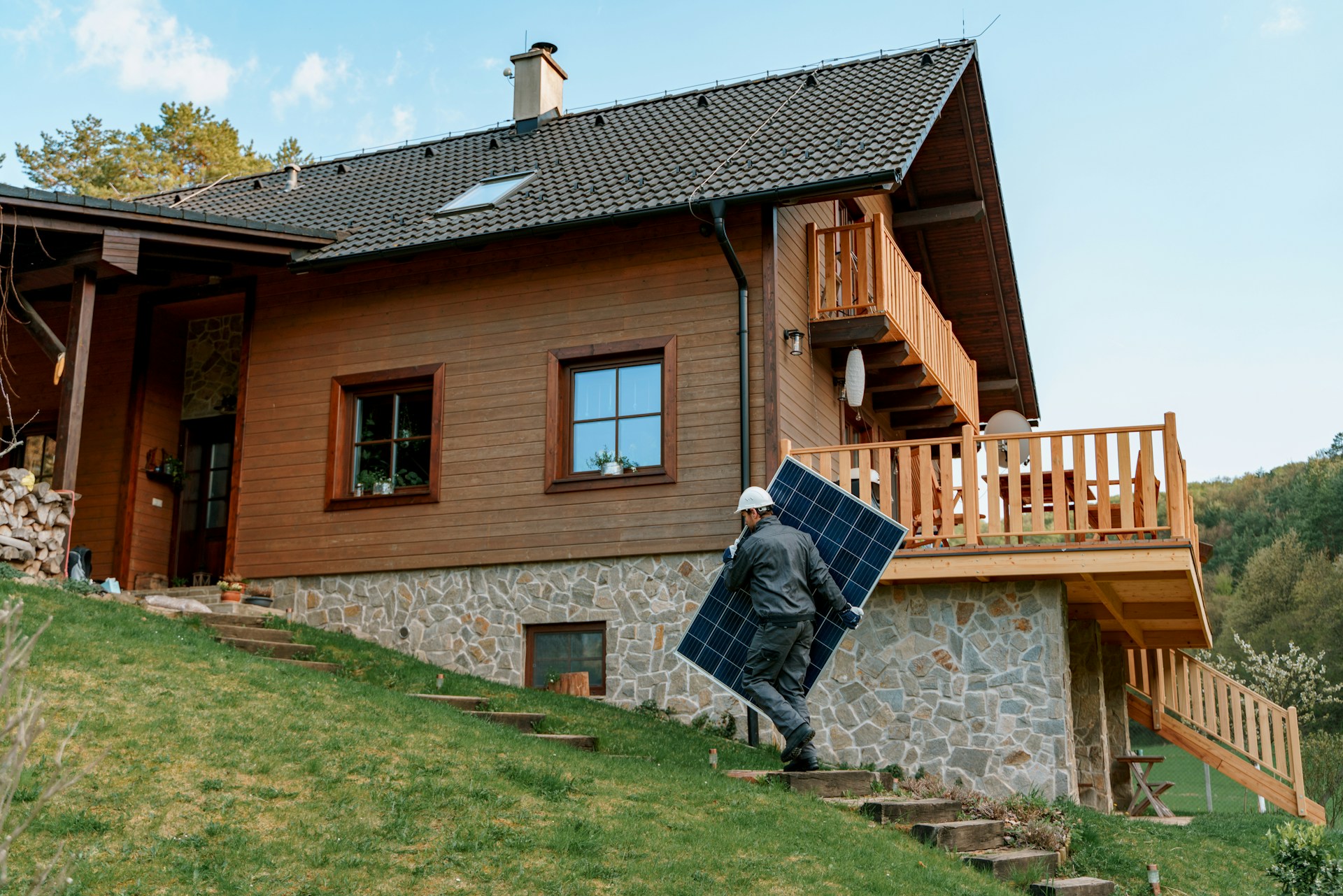Embracing clean energy and adopting sustainable lifestyle practices are crucial steps toward reducing our carbon footprint and preserving the environment for future generations.
Transitioning towards a sustainable lifestyle may seem overwhelming, but with the right guidance and a well-structured plan, you can take incremental steps to make a significant difference. Whether tapping into renewable energy sources, making conscious consumer choices, or promoting sustainability at the workplace, every small action helps.
In this comprehensive checklist, we’ll offer practical and accessible tips that anyone can implement to shift to a more eco-friendly lifestyle at home and work. We’ll present various clean energy options and simple everyday solutions that can reduce energy consumption, minimize waste, and promote sustainability. We aim to empower and encourage you with actionable strategies that can ultimately lead to a cleaner, greener world, one step at a time.
1. Switch to Renewable Energy Sources at Home
One of the most significant steps you can take toward a sustainable lifestyle is to transition your home energy consumption to renewable sources, such as solar or wind power. Here are some ways to make that shift:
– Install solar panels: Solar panels can be installed on rooftops or using ground-mounted systems, converting sunlight into electricity for your home. According to the Office of Energy Efficiency and Renewable Energy, the average solar panel system can offset three to four tons of carbon dioxide yearly emissions.
– Consider wind turbines: Small residential wind turbines can also provide clean energy, particularly if you live in a rural area with consistent wind. Before investing in a wind turbine, consult local zoning regulations and confirm whether your area has sufficient wind resources
– Purchase green energy from your utility: Many utility companies offer green energy plans that source electricity from renewable energy projects. This option is especially useful if installing solar panels or wind turbines is not feasible for your home.
2. Adopt Energy-Efficient Appliances and Equipment
Improving the energy efficiency of appliances and electronic devices can significantly reduce your home’s energy consumption and carbon footprint. Here are some tips to help you choose energy-efficient equipment:
– Look for the ENERGY STAR label: ENERGY STAR certified products typically use 10-50% less energy compared to conventional appliances. These products include refrigerators, air conditioners, light bulbs, televisions, and more.
– Conduct an energy audit: An energy audit helps identify inefficiencies in your home’s energy consumption and provides recommendations for improvements. Many utility companies offer free or discounted energy audits to their customers.
– Implement a smart thermostat: Smart thermostats help optimize your heating and cooling systems, adjusting temperatures based on your schedule and preferences, leading to energy savings and lower utility bills.
3. Optimize Home Heating and Cooling
Heating and cooling systems account for a significant portion of a household’s energy consumption. Here are some methods to increase their efficiency:
– Insulate your home: Ensure your home has adequate insulation to reduce heat loss in winter and heat gain in summer. Proper insulation can save up to 15% on heating and cooling costs.
– Seal air leaks: Use weatherstripping and caulking to seal gaps around windows and doors, preventing drafts and significantly reducing energy costs.
– Regular maintenance: Schedule periodic maintenance of your heating and cooling systems to ensure optimal performance. Clean or replace filters at least once every three months.
4. Embrace Sustainable Transportation Options
Green transportation alternatives significantly reduce personal carbon emissions and fuel usage while promoting a more sustainable lifestyle. Some possible options include:
– Walk, bike, or use public transportation: Reduce dependency on personal vehicles and opt for greener alternatives whenever possible. Biking or walking not only helps the environment but also benefits your health.
– Buy an electric vehicle (EV) or hybrid: Electric vehicles produce zero tailpipe emissions, while hybrids combine a gasoline engine with an electric motor to reduce emissions and fuel consumption. Many countries and states offer tax incentives for buying EVs or hybrids.
– Carpool or rideshare: Sharing rides with coworkers, neighbors, or friends helps reduce traffic congestion, fuel consumption, and carbon emissions.
5. Incorporate Sustainable Practices at Work
Much like at home, bringing sustainable practices to the workplace can have a considerable impact on energy consumption and emissions. Here are some strategies to help your office become more eco-friendly:
– Encourage telecommuting: Allowing employees to work from home, even part-time can significantly reduce transportation emissions and associated energy consumption.
– Implement energy-saving office policies: Encourage energy-saving habits such as turning off computers, lights, and electronic devices when not in use and adjusting thermostats appropriately.
– Promote employee awareness: Educate employees on sustainability initiatives and engage them in implementing green practices in the workplace.
Building a Greener Future Through Sustainable Living
The transition to a sustainable lifestyle is not merely a personal responsibility but a collective effort to ensure the well-being of our planet and future generations. Embracing clean energy sources, adopting energy-efficient practices, and fostering a culture of eco-conscious decision-making are integral components of creating a greener, cleaner world.
Luckily, making the shift to a sustainable lifestyle is an achievable goal. With the practical tips and guidance shared in this article, you can make a meaningful difference in your own home and workplace. As you embark on this journey toward sustainability, let William Sheriff be your guide. His wealth of knowledge and expertise in the clean energy sector will keep you informed and inspired, offering current insights, developments, and strategies for creating a more sustainable future.
Connect with William Sheriff, an American uranium expert, and delve deep into clean energy and sustainable practices, empowering yourself with the knowledge and tools necessary to make a lasting impact in your community and worldwide. Together, let’s build a more resilient and sustainable future for generations to come!





